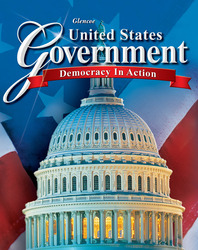United States Government: Democracy in ActionChapter 12:
Supreme Court Decision MakingStudent Web Activity Lesson PlansIntroduction
The Framers of the Constitution outlawed illegal searches and seizures with the Fourth Amendment. The Supreme Court upholds rulings that apply to that amendment, although the definition of "private property" has been interpreted in various ways. In this activity, students will learn how the Court shapes public policy with its interpretations of the law. Lesson Description
Students will explore a Web site about the Supreme Court case Katz v. United States. They will read a summary of the case as well as the majority, concurring, and dissenting opinions. They will also listen to the oral arguments of the case, and then answer questions about the Court's decision. Instructional Objectives
- Learners will identify the facts, questions, and conclusion of Katz v. United States.
- Learners will comprehend how justices interpret the same case in various ways.
- Learners will express their thoughts on how the Court operates during oral arguments.
|
Student Web Activity Answers
- The case would have been heard in a district court, followed by a Court of Appeals. The Supreme Court granted certiorari to hear the case.
- Does the Fourth Amendment protection against unreasonable searches and seizures require the police to obtain a search warrant in order to wiretap a public pay phone?
- Justice Stewart wrote, "The Fourth Amendment protects people, not places." What a person seeks to preserve as private, even in an area accessible to the public, may be constitutionally protected. Katz was entitled to Fourth Amendment protection for his conversations.
- Olmstead v. United States and Goldman v. United States were overturned.
- Answers will vary. Students may have been surprised by the interruptions and questions of the justices to narrow the focus of the case.
|
 | 




